Three groups of processed foods
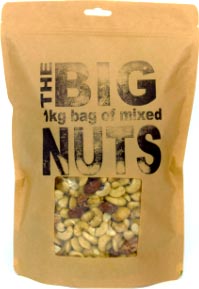 In last month’s Health Yourself, I discussed fake foods and their negative health implications. In this month’s column, I will expand this discussion and share with you some fake foods to avoid.
In last month’s Health Yourself, I discussed fake foods and their negative health implications. In this month’s column, I will expand this discussion and share with you some fake foods to avoid.
Processed foods and drinks are not a homogeneous group. Differences in type and level of processing become important in terms of health.
Minimally processed foods: These are items that have seen little processing between the farm and the consumer.
Most minimally processed foods remain recognizable, and may have been washed, peeled, sliced, frozen, dried, or pasteurized. Minimal processing includes removal of inedible portions, as well as refrigeration, freezing, fermenting, pre-cooking, drying, skimming, bottling, and packaging.
Examples include skim milk, some packaged frozen vegetables, grains, legumes, nuts, fruits, flour, fresh meat, roots, and tubers. Packaged pancake mix that includes only minimally processed dry ingredients and requires the consumer to add liquid and eggs, also could be considered a minimally processed food.
Diets wholly or mainly made up from unprocessed and minimally processed foods usually provide adequate nutrient and energy density when they contain little salt; a varied combination of grains, vegetables, fruits, and nuts; and moderate quantities of animal foods.
Moderately processed food: These foods are moving further away from their original form.
They usually contain many added ingredients and may require some preparation before consumption. Examples include a jar of spaghetti sauce, flavored yogurt, and bread. Another example could be a pancake mix that includes all the necessary ingredients, except water. This is different from the minimally processed pancake mix because it contains added ingredient such as monocalcium phosphate, dextrose, and glucose solids.
Other examples include oils, fats, flours, pastas, starches, and sugars.
Highly, ultra processed foods: These foods generally include numerous added ingredients and are mostly or fully prepared in a factory.
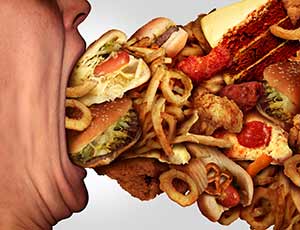 Little or no preparation needs to be done before eating ultra-processed foods. Most contain flavor and texture enhancers, salt and other preservatives, flavorants, and coloring agents.
Little or no preparation needs to be done before eating ultra-processed foods. Most contain flavor and texture enhancers, salt and other preservatives, flavorants, and coloring agents.
Some ingredients commonly found in highly processed foods include high-fructose corn syrup (sugar extracted from corn), polysorbate (an emulsifier that keeps water and oils mixed), and sodium erythorbate (a food additive helps process meats retain and improve color and flavor). Examples include chips, frozen pizzas, microwave dinners, ice cream, chocolate, candies, sweets, breakfast cereals, cereal bars, and sugared/soft drinks.
Meat products such as nuggets, hot dogs, burgers, and sausages made from processed or extruded remnants of meat also are classified as ultra-processed foods. Ultra-processed foods have no real resemblance to real or minimally processed foods, although they may be shaped, labeled, and marketed to seem wholesome and fresh. They are not!
Most moderate and ultra-processed foods are composed primarily of ingredients rather than whole, real foods. These foods, by themselves, are not palatable and are hardly compatible with survival. This explains the problem with modern diets that contain a lot of ultra-processed food: Most are based on low-nutrient-dense food with little dietary fiber, and have high levels of added sugar, saturated fat, salt, and trans-fatty acids.
Eat whole foods — not ingredients!
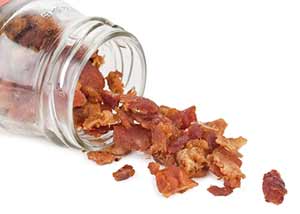 Ultra-processed foods induce unhealthy dietary patterns as they usually include”fast” production methods designed to be portable, convenient, and accessible. They encourage eating patterns such as “grazing,” skipping main meals, and eating when doing other things, such as watching television, driving a car or working, and eating alone.
Ultra-processed foods induce unhealthy dietary patterns as they usually include”fast” production methods designed to be portable, convenient, and accessible. They encourage eating patterns such as “grazing,” skipping main meals, and eating when doing other things, such as watching television, driving a car or working, and eating alone.
It seems to me, the best dietary advice is to base our food preferences on whole, fresh, and minimally processed foods. To prevent disease and enhance well-being, it is best to avoid (or at least minimize) consumption of processed food as much as possible.
Fake food examples
As detailed above, the following groups constitute most moderate and highly processed foods:
- Canned goods (including soup) containing large amounts of sodium and/or fat
- Pasta meals made with refined white flour instead of whole grains
- Packaged high-calorie snack foods, such as chips, candies, and chocolates
- Frozen fish sticks and frozen dinners high in sodium
- Packaged cakes and cookies
- Boxed meal mixes that are high in fat and sodium
- Sugary breakfast cereals
- Processed meats
- Sugar-filled juices and soft drinks
Fake dairy foods you may not realize are fake
 Processed cheese (“prepared cheese,” “cheese product,” or “cheese singles”)
Processed cheese (“prepared cheese,” “cheese product,” or “cheese singles”)
Manufacturers of processed cheese containing less than 51 percent actual cheese are not allowed to call the product “natural cheese.” Instead, the industry uses names like “singles” and “cheese products.” Ingredients include small portions of real cheese or other unfermented dairy by-products, plus emulsifiers, saturated vegetable oils, extra salt, food colorings, whey, and/or sugar. That’s right, sugar!
Fake whipped cream
Ingredients include water, hydrogenated vegetable oil (coconut and palm kernel oils), high-fructose corn syrup, skim milk, light cream, less than 2 percent of sodium caseinate, natural and artificial flavors, xanthan and guar gums, polysorbate 60, sorbitan monostearate, and beta-carotene. Sounds delicious, right?
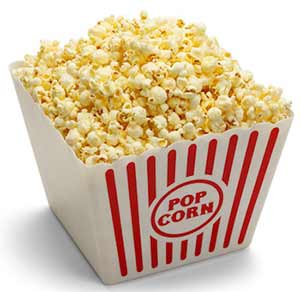 Fake movie-theater popcorn butter
Fake movie-theater popcorn butter
That butter your favorite movie theater uses to flavor your popcorn is not real butter. It’s hydrogenated soybean oil with artificial colors, flavors, and preservatives. The flavoring comes from a chemical called diacetyl (DA), which links to lung disease. In addition, DA also has been linked to higher incidences of Alzheimer’s disease.
Fake ice cream
Ingredients include milk, sugar, corn syrup, cream, whey, mono and diglycerides, carob bean gum, guar gum, carrageenan, natural flavors, annatto (for color), vitamin A palmitate, and Tara gum. Such a product cannot claim the label ice “cream” because it does not contain at least 10 percent milk fat.
Fake condiments you may not realize are fake
Fake mayonnaise
Ingredients include water, soybean oil, vinegar, high-fructose corn syrup, modified cornstarch, sugar, eggs, salt, natural flavor, mustard flour, potassium sorbate as a preservative, paprika, and dried garlic. This white spread doesn’t technically meet the official definition of “mayonnaise,” which requires at least 65 percent vegetable oil. So if you are seeking real mayonnaise, avoid the jar labeled “mayonnaise spread” or “dressing.”
Real maple syrup contains only maple sap. It takes approximately 40 gallons of sap to produce one gallon of syrup. The more common, mass-produced “maple syrup” derives primarily from corn syrup, along with a hefty helping of artificial additives. Anything labeled “maple-flavored syrup,” “pancake syrup,” or “table syrup,” is fake maple syrup. In one recent survey, 70 percent of respondents chose the fake version over pure maple syrup! Go figure!
Wasabi or horseradish
More than 90 percent of “wasabi” purchased in Japanese restaurants doesn’t actually contain a trace of wasabi. Real wasabi is a root rhizome prized for both its roots and stalks. It costs about $75 per pound, and is highly perishable. Fake wasabi derives from dried horseradish and mustard flour with a hefty dose of green dye.
Fake proteins you may not realize are fake
Ever wonder why store-bought and some restaurant crab cakes and crab dips are so inexpensive? It’s because the “crab” content is virtually nonexistent. Most imitation crabmeat is a seafood product known as surimi with various texturizing ingredients, flavorants, and colorants. Surimi is mostly composed of fish proteins, usually derived from the cod family. These proteins form a sturdy gel, which resembles actual crab meat once it is dyed orange, shaped and cut into thin strips, and rolled together to mimic authentic crabmeat texture. Sodium, MSG, artificial flavorings, tapioca or corn, added sugar, and poor-quality vegetable oils may join the mix in order to enhance flavor. Ugh. Pass.
Fake bacon bits
They may be a quick and convenient way to add smoky flavor to baked potatoes, casseroles, and other dishes, but a more accurate name would be no-bacon bits. They’re actually made from a slew of synthetic ingredients, from caramel coloring to artificial flavorings. Most “flavored” bacon bits include such non-appetizing ingredients as caramel color, red dye, maltodextrin (a partially hydrolyzed starch), lactic acid, and multiple flavor enhancers.
In a recent article, two different types of fast food nuggets were analyzed to determine their true content. In both cases, chicken meat was not the primary ingredient. In fact, chicken made up just 50 percent or less of the nugget. Other ingredients included chicken fat, blood vessels, nerves, cartilage and bone, and liberal helpings of preservatives and sweeteners.
Fake white tuna
White tuna, or albacore, is prized for its light color and mild flavor. A recent study found that 84 percent of the time, fish marketed as white tuna actually is escolar, a cheap species of mackerel that’s banned in Japan and Italy because of its gastrointestinal side effects (prolonged, oily anal leakage when eating six or more ounces).
Fake fruits and sweets you may not realize are fake
Foods like imitation blueberries actually exist, thanks to a concoction of dextrose (sugar), palm kernel oil, flour, citric acid, cellulose gum, artificial flavors, and artificial dyes. These fake blueberries are typically found in such packaged foods as pancake mix, corn muffin mixes, and other dry goods that say they’re made “with imitation blueberries” (in fine print, of course).
Fake orange juice
Fruit concentrates are basically syrup, usually added to drinks and foods as additional sweeteners. Ingredients include water, high-fructose corn syrup, and 2 percent or less of each of the following: concentrated juices (orange, tangerine, apple, lime, grapefruit). Additives include citric acid, food flavoring, canola oil, cellulose gum, xanthan gum, sodium hexametaphosphate, sodium benzoate to protect flavor, and different colorants.
Fake chocolate candy
At its most elemental, chocolate is a blend of cocoa beans, cocoa solids, and cocoa butter. But several years ago, products like Milk Duds and Mr. Goodbar swapped cocoa butter, which gives chocolate its creamy texture, for less expensive vegetable oil. Removing cocoa butter violates the FDA’s definition of milk chocolate, so many of the chocolate-coated candies that used to be labeled “milk chocolate” now say “chocolate candy.”
References
- Cheung, W., et al. 2017. “A metabolomic study of biomarkers of meat and fish intake.” American Journal of Clinical Nutrition; Jan. 25. pii: ajcn146639. doi: 10.3945/ajcn.116.146639. [Epub ahead of print]; PMID:28122782.
- Cordain, L., et al. 2005. “Origins and evolution of the Western diet: Health implications for the 21st century.” American Journal of Clinical Nutrition; 81(2);341.
- Crittenden, A.N., Schnorr, S.L. 2017. “Current views on hunter-gatherer nutrition and the evolution of the human diet.” American Journal of Physical Anthropology.” Jan;162 Suppl 63:84-109. doi: 10.1002/ajpa.23148; PMID:28105723.
- de Shazo, R.D., et al. 2013. “The autopsy of chicken nuggets reads ‘Chicken Little.'” American Journal of Medicine;1 26(11);1018. [www.dx.doi.org/10.1016/j.amjmed.2013.05.005].
- Diacetyl chemical in artificial-butter-popcorn linked to Aalzheimers, plaque build-up,” cbsnews.com, Aug. 9, 2012. [www.cbsnews.com/news/diacetyl-chemical-in-artificial-butter-popcorn-linked-to-alzheimers-plaque-build-up/]
- Groch, J. 2007. “Convenience foods save little time, lack nutrients.” MedPage Today, [www.medpagetoday.com/PrimaryCare/DietNutrition/dh/6368]
- Lustig, R.H. 2017. “Processed food — An experiment that failed.” Journal of the American Medical Association, Pediatrics. Jan. 23. doi: 10.1001/jamapediatrics.2016.4136. [Epub ahead of print]; PMID:28114671.
- Lustig, R.H. 2015. “Metabolic syndrome and the ‘Western Diet.’ In: Kiess, W.M., et al., eds. “Metabolic syndrome and obesity in childhood and adolescence,” Vol. 19. Basel, Switzerland: Karger Publishers; 136.
- Mendonça, R.D., et al. 2016. “Ultra-processed food consumption and the incidence of hypertension in a mediterranean cohort: The Seguimiento Universidad de Navarra Project.” The American Journal of Hypertension. Dec. 7. pii: hpw137. [Epub ahead of print]; PMID: 27927627.
- Mendonça, R.D., et al. 2016. “Ultra-processed food consumption and risk of overweight and obesity: The University of Navarra follow-up (SUN) cohort study.” The American Journal of Clinical Nutrition; 104(5):1433-1440.
- More, S.S., et al. 2012. “The butter flavorant, diacetyl, exacerbates β-amyloid cytotoxicity.” Chemical Research in Toxicology; 25(10);2083.
- Olmsted, L., 2016. “Real food/fake food: Why you don’t know what you’re eating and what you can do about it.” Algonquin Books. ISBN-10:1616204214.
- Schlosser, E. 2001. “Fast-food nation: The dark side of the all-American meal.” Houghton Mifflin, New York.
- Steele, E.M. 2016. “Ultra-processed foods and added sugars in the U.S. diet: Evidence from a nationally representative cross-sectional study.” BMJ Open. [www.bmjopen.bmj.com/content/6/3/e009892]
- Stuckler, D., et al. 2012. “Manufacturing epidemics: The role of global producers in increased consumption of unhealthy commodities including processed foods, alcohol, and tobacco.” PLOS/Medicine; June 26. [www.dx.doi.org/10.1371/journal.pmed.1001235]
- The dangers of preservatives and additives. [www.freedomyou.com/nutrition_book/enriched_fortified_synthetic_food.htm]
- www.madehow.com/Volume-3/Imitation-Crab-Meat.html
- www.washingtonpost.com/news/wonk/wp/2015/03/27/why-americans-overwhelmingly-prefer-fake-maple-syrup/?utm_term=.a7520c8b0a56ide

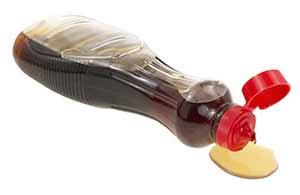
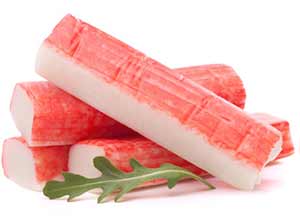
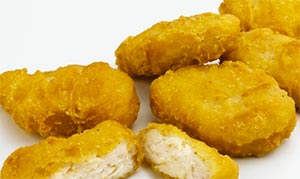



Ethel Larsen - 1972
I’m really starting to look forward to what Victor Katch has to say each issue. It is relevant, important, and accessibly written. Thank you, Michigan Today and thank you Professor Katch!
Reply
Aditya Thomas - 2007
I look forward to reading Professor Katch’s articles too!
Reply
Larry Gagnon - 1968 & 1976
Author makes a mistake by over-stating: “Most “flavored” bacon bits include such non-appetizing ingredients as caramel color, red dye, maltodextrin (a partially hydrolyzed starch), lactic acid, and multiple flavor enhancers.” I will bet that the reason for the “non-appetizing” ingredients is to make the food taste better. So, author super-imposes his prejudice against added ingredients by redefining “non-appetizing”.
Ditto: “Most moderate and ultra-processed foods are composed primarily of ingredients rather than whole, real foods. These foods, by themselves, are not palatable and are hardly compatible with survival.” To state that these foods are “hardly compatible with survival” is nonsense. What does that statement even mean? Will I drop dead in a week, a year, a hundred years? What does “not palatable” mean? I believe that the worst thing about high-fat foods is that they are too palatable (i.e. too tasty).
Is Fake Ice Cream bad? “Such a product cannot claim the label ice “cream” because it does not contain at least 10 percent milk fat.” My guess is that milk fat in its unprocessed form is saturated. So, does having too little unsaturated fat make Fake Ice Cream unhealthy?
Fake maple syrup? “In one recent survey, 70 percent of respondents chose the fake version over pure maple syrup! Go figure!” Is real (pure) maple syrup mostly just sugar? How is fake maple syrup worse from a nutritional standpoint?
Reply
Tompthy McCollum - 1971 School of MT&D
Thanks for this update on how badly we are being treated by the food industry. My wife deals with A-fib and I survived a non-bleed stroke, so we are on restricted diets. In reading the ingredients on labels, it is amazing what prisoners we are of sodium. Why does the industry not do something about this?
Reply
Linda Goudsmit - 1969
Fake food. Fake news. Fake boobs. Fake relationships. As a society we need to reconsider fake vs authentic.
We must rethink the whole subject of fakery starting with food – food is medicine for our bodies – who would recommend fake medicine?? Fake medicine does not work. Fake medicine is harmful. Fake medicine only benefits the dishonest producer not the trusting consumer.
Fake food is promoted in the exact same way that every other fake product is marketed/advertised – the now very famous echo chamber of false information that promises convenience, good health, youth, beauty, a happy life, etc etc.
“BUYER BEWARE” is not just a slogan – it is an acknowledgement that just because someone says something doesn’t make it true.
I suggest we all apply BUYER BEWARE to what we eat and stop listening to the pervasive false advertising and start applying our own common sense that tells us we would never willingly choose fake medicine – so no more fake food – we will all be healthier.
Reply
G.M. Freeeman - 1950 Rackham
I recommend Nutrition Action magazine which I believe you will find pretty much in agreement with Katch’s observations. The nearer the food is to the original usually the better for you. The average American ingests too much sugar and too much salt.
Caveat Emptor!!
Reply
Karen Markey
Thanks Vic. After reading and reviewing your article, I’ll be sure to categorize what I’m buying into one of your three categories and think twice about purchasing the ultra processed foods, maybe even the moderately processed foods.
Reply